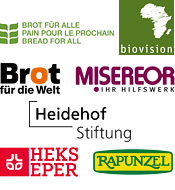News
27.05.2016
Study finds organic agriculture can boost local economies
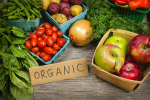
Organic food and crop production, and the business activities accompanying organic farming, helps lower poverty and increase household incomes in rural America, new research shows. The White Paper was prepared by Penn State Agricultural Economist Dr Edward Jaenicke. The study finds organic hotspots – counties with high levels of organic agricultural activity whose neighboring counties also have high organic activity – increase median household incomes by an average of $2,000 and reduce poverty levels by an average of 1.3 percent. “This research systematically investigates the economic impacts of organic agriculture,” noted Jaenicke. “Its important findings show that organic contributes to the economic health of local economies. The growing market interest in organic agriculture can be leveraged into effective policy for economic development.” The author identified 225 counties in the United States as organic hotspots. They are particularly strong on the West Coast, where in 2013 a single hotspot of contiguous counties stretched from California to Washington. Smaller hotspots also appear in the northern Midwest anchored on Wisconsin, in several parts of New England and the northern Mid-Atlantic states. Dr Jaenicke then looked at how these organic hotspots impact two key county-level economic indicators: the county poverty rate and the median household income. The same beneficial results are not found for general agricultural hotspots. If the economic impact of a county being part of a general agricultural hotspot is isolated, the county’s poverty rate drops by only 0.17 percent and the median household income increased by only $75. “We know that organic agriculture benefits our health and our environment,” said Laura Batcha, CEO and Executive Director of the Organic Trade Association (OTA) that commissioned the study. “This significant research shows organic can also benefit our livelihoods and help secure our financial future.” The study suggests organic agriculture can be used as an economic development tool by policymakers at all levels - local, state and national. In the United States, organic has experienced a boom over the past years. Organic food sales in 2015 jumped by 11 percent to almost $40 billion, exceeding the 3 percent growth rate for the overall food market. (ab)
23.05.2016
Bayer makes $62 billion bid for GM seed giant Monsanto

Pharmaceutical and chemicals company Bayer has made an offer to buy US seed giant Monsanto for $62 billion US dollars. The German group confirmed on Monday it made an all-cash offer to acquire all of the issued and outstanding shares of common stock of Monsanto for $122 per share in a deal that would create the world’s biggest seller of seeds and farm chemicals. The offer, based on Bayer’s written proposal to Monsanto dated May 10, values the US company at 37 per cent more than its closing share price on 9 May. “Together we would draw on the collective expertise of both companies to build a leading agriculture player with exceptional innovation capabilities to the benefit of farmers, consumers, our employees and the communities in which we operate,” said Werner Baumann, CEO of Bayer AG. However, environmental and anti-GMO activists fear exactly the opposite, warning against increased corporate power over the world’s food supply. “A further concentration of corporate power in the agriculture/chemical sector would be bad news for farmers and consumers,” said Franziska Achterberg, Greenpeace’s EU food policy director. “It would accelerate the decrease in crop diversity while limiting consumer choice. Farmers would become even more dependent on just a handful of global players. They would find it harder to choose what they grow and how they grow it.” Monsanto confirmed it had received an unsolicited, non-binding proposal from Bayer AG for a potential acquisition. According the US company, the Board of Directors is reviewing the proposal and there won’t be further comments until this process will be completed. A Monsanto-Bayer merger would first have to pass regulators’ scrutiny. On Saturday, activists in more than 400 cities worldwide took to the streets in simultaneous demonstrations to protest against seed giant Monsanto and genetically modified crops. (ab)
19.05.2016
Study shows 400m meals' worth of edible food wasted in the UK each year

The equivalent of almost 400 million meals of edible food waste from UK supermarkets and manufacturers each year is not redistributed to those in need, new research shows. According to analysis by the Waste & Resources Action Programme (Wrap), an estimated 1.9 million tonnes of food is wasted in the UK grocery supply chain every year, 56% of which could be avoided. Only 18 per cent of the 270,000 tonnes of edible food waste produced in 2015 was given to businesses or charities to be used in food banks, the report found. Instead, the large majority of the 270,000 tonnes suitable for redistribution was going to waste, with around 40% going to anaerobic digestion and other recycling options and another 40% being used for energy recovery. A further 37,000 tonnes are currently being used to produce animal feed. Lindsay Boswell, chief executive of food redistribution charity FareShare, said: “Wrap’s report confirms what FareShare has been saying for some time: that hundreds of thousands of tonnes of good, surplus food could be saved from waste each year, and redistributed to charities to feed vulnerable people.” The government’s waste advisory body says the study is the most comprehensive review so far of surplus food and food waste from UK food manufacturers and grocery retailers, highlighting the overall avoidable food waste figures and breaking them down into eleven sub-sectors, such as meat and dairy. “Through a combination of prevention, redistribution to people and diversion to animal feed, the grocery supply chain could, in the next 10 years, almost halve its avoidable food waste, from 2009 when we first started work in this area,” said Dr Richard Swannell, Director at WRAP. It is estimated that around 450,000 tonnes of food waste in retail and manufacturing could be practically avoidable by 2025, a reduction of 23% compared to total food waste levels. Three sectors alone (bakery, fresh fruit and vegetables, dairy) would have the potential to account for more than half of it. Action to increase prevention of food waste could save businesses £300 million a year, the report found. (ab)
12.05.2016
One in five of the world's plant species facing extinction, scientists warn
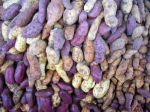
One in five of the world’s plant species are estimated to be threatened with extinction, according to the State of the World’s Plants released on Monday by experts at the Royal Botanic Gardens Kew. The biggest factors threatening plant species is the destruction of habitats, including for farming, but the report also reveals that there are 2000 new plant species discovered each year. “This is the first ever global assessment on the state of the world’s plants,” said Professor Kathy Willis, Director of Science at the Royal Botanic Gardens, Kew. “We already have a ‘State of the World’s …birds, sea-turtles, forests, cities, mothers, fathers, children even antibiotics’ but not plants. I find this remarkable given the importance of plants to all of our lives – from food, medicines, clothing, building materials and biofuels, to climate regulation.” The aim of the report therefore is to provide an assessment of our current knowledge on the diversity of plants on earth, the global threats these plants currently face, and the policies dealing with them. According to the more than 80 scientists involved in the report, there are now an estimated 391,000 plants known to science of which 369,000 are flowering plants. At least 31,000 plant species are used by people as medicines, food, material, animal feed or for other purposes. Among the plant species discovered in 2015 are a massive leguminous tree (Gilbertiodendron maximum), 13 new species from the onion family and 18 species of Ipomoea from Bolivia, among which is a close relative of the sweet potato. “Some areas of the planet exhibit an incredible quantity and diversity of plants, with many unique species. But many of these areas are degrading or disappearing entirely under the assault of increasing threats, including land-use change, climate change, pests and diseases,” the authors warn. According to the report, the biggest threat for plant species is the destruction of habitats for farming (31%), with the expansion and intensification of crop farming as well as livestock farming. The growing international trade in palm oil during the past 20 years, for example, has had significant effects on the conversion of natural forest and peatlands to palm oil plantations. Biological resource use, such as deforestation for timber or the gathering of terrestrial plants are also a major threat (21%), followed by the construction of buildings and infrastructure (13%). There are many emerging threats also occurring with plant diseases caused by fungal, bacterial and viral pathogens. Climate change is still a smaller factor at 4% but is likely to grow over the next decades. “Plants are absolutely fundamental to humankind,” Prof Kathy Willis told The Guardian. “Without plants we would not be here. We are facing some devastating realities if we do not take stock and re-examine our priorities and efforts.” (ab)
09.05.2016
Climate-driven water scarcity will hit the world’s poorest, World Bank warns

Water scarcity, exacerbated by climate change, could hinder economic growth, spur migration, and spark conflict, the World Bank warned on May 3. A new report finds that water will become scarce in world regions where it is currently plentiful - such as Central Africa and East Asia - and scarcity will further worsen in regions where water is already in short supply - such as the Middle East and the Sahel in Africa. The World Bank projects that these regions could see their growth rates decline by as much as 6 percent of GDP by the mid of the century due to water related impacts on agriculture, health, and incomes. This figure represents a median across the various climate scenarios considered under business-as-usual water management. The effects could therefore be even more severe in the drier parts of the world which are also home to the world’s poorest while Western Europe could be largely spared. Due to the effects of growing populations and expanding cities, the demand for water will rise exponentially, while supply becomes more uncertain. The report warns that reduced freshwater availability and competition from other uses, such as energy and agriculture, could reduce water availability in cities by as much as two thirds by 2050 compared to 2015 levels. The agricultural sector already consumes over 70 percent of the available freshwater but over the next few decades, these already high water requirements are set to increase. The authors argue that the impacts of water scarcity and mismanagement will be felt disproportionately by the poor. Nearly 78 percent of the world’s poor, approximately 800 million people, live in rural areas and rely on agriculture, livestock, or aquaculture to sustain themselves and their families. They are more likely to rely on rain-fed agriculture and live on the most marginal lands which are more prone to floods, and are most at risk from contaminated water and inadequate sanitation. With climate change expected to have dramatic effects on rainfall variability in many regions, farmers might be hit harder than perhaps any other group. Under high emissions scenarios, changes in rainfall patterns are projected to negatively affect crop yields globally, reducing them by up to 10 percent by 2030, and up to nearly 35 percent by 2080. According to the report, ensuring a sufficient and constant supply of water will be essential to achieving global poverty alleviation goals. Water insecurity could also multiply the risk of conflict, the report adds. Food price spikes caused by droughts can inflame latent conflicts and drive migration. “If countries do not take action to better manage water resources, our analysis shows that some regions with large populations could be living with long periods of negative economic growth,” said World Bank President Jim Yong Kim. “But countries can enact policies now that will help them manage water sustainably for the years ahead.” When governments respond to water shortages by boosting efficiency and allocating even 25% of water to more highly-valued uses, such as more efficient agricultural practices, losses decline dramatically and for some regions may even vanish. Possible measures includes better planning for water resource allocation, adoption of incentives to increase water efficiency, and investments in infrastructure for more secure water supplies and availability. (ab)
02.05.2016
TTIP leak reveals US pressuring EU to lower consumer protection

The US is putting pressure on the EU to lower environmental and consumer protection standards, leaked TTIP documents reveal. Greenpeace Netherlands has published secret negotiation texts for the TTIP free trade deal between the United States and the European Union reflecting about half of the draft text as of April 2016, prior to the start of the 13th round of TTIP negotiations. The documents released on Monday morning show that the US government is exerting more intense and far-reaching pressure on the EU than previously thought. They reveal that in particular the agricultural sector remains a bone of contention. Washington is threatening to prevent the easing of car exports into the US in order to force the EU to open its agricultural market for increased imports of US farm produce. A document on the tactical state of play demonstrates that the U.S. government “hastened to point out that it would need to consult with its industry regarding some of the products and that progress on motor vehicle-related parts would only be possible if the EU showed progress in the discussion on agricultural tariffs.” Greenpeace says the text is a nightmare for consumer protection. The precautionary principle that is enshrined in the EU Treaty and allows for the prohibition of products if they are not proven to be safe, is not mentioned in any of the obtained 12 chapters. On the other hand, the US demand for a ‘risk based’ approach which instead of taking preventive measures waits for evidence of harm before regulating is found in various chapters. With respect to consumer protection, the US states that prior to passing a ban the EU should evaluate “any alternatives to achieve the appropriate level of protection,” meaning that no law in this regard should be passed in the first place. In addition, the EU should also publicly explain whether any of those alternatives are significantly less restrictive to trade. “It is time to shine a light on these negotiations. Hard won environmental progress is being bartered away behind closed doors,” said Faiza Oulahsen, campaigner for Greenpeace Netherlands. “These documents reveal that civil society was right to be concerned about TTIP. We should stop the negotiations and start the debate.” President Obama said last week during his visit to Germany he was confident a deal could be reached soon. But the leaked documents paint a different picture, showing that opposing positions and text passages are still there side by side without a common draft text. The leak further reveals that the US was blocking an EU demand to replace the controversial private arbitration tribunals for corporative lawsuits with a model of public arbitration panels. In addition, the documents suggest that both sides consider giving corporations much wider participation in decision making. “These leaked documents confirm what we have been saying for a long time: TTIP would put corporations at the centre of policy-making, to the detriment of environment and public health,” said Jorgo Riss, director of Greenpeace EU. Until now, elected representatives were only allowed to view the TTIP documents under guard in a secure room without the permission to talk about the content. (ab)
27.04.2016
Soil microbes may not be as adaptable to climate change as presumed
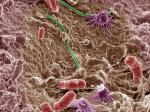
Soil microbes may not be as adaptable to climate change as expected, according to new research published in the journal PLOS One. The study raises concerns that the tiny bacteria, fungi and other micro-organisms that determine soil health and exert enormous influence over the earth’s carbon cycle might struggle to carry out essential ecosystem functions under changing conditions. “Soil is the major buffer system for environmental changes, and the microbial community is the basis for that resilience. If the microbial community is not as resilient as we had assumed, then it calls into question the resilience of the overall environment to climate change,” said one of the authors, Vanessa Bailey of the U.S. Department of Energy’s Pacific Northwest National Laboratory. In a long-term study, the researchers exchanged soils samples from two differents sites on the same mountain slope in eastern Washington state which both have similar plant species and soil types. The higher location had a cooler, moister climate and 500 metres down the mountainside the climate was warmer and drier. After 17 years, they analysed soil samples in the laboratory as well as control samples from both locations, measuring CO2 production, temperature response, enzyme activity, and bacterial community structure. The scientists found that the microbes in both sets of transplanted soils retained many of the characteristics they had in their “native” climate, including their original rate of respiration - how quickly microbes convert carbon in the soil into carbon dioxide as they break down organic matter. The microbes native to the higher site naturally respire at a higher rate because of the moister climate and larger supplies of carbon in their environment. When they were moved down to the warmer site, they continued to respire at a fast rate other than their colleagues from the lower location. The microbes that were moved up the mountain showed an unusually small response to the temperature change and continued to respire at a slow rate although biological theory and climate models predict a larger change. According to the authors, it is surprising to find that the soils’ native environment continued to exert such a profound influence on microbial activity even 17 years later. This means that we can’t just assume that soils will respond to climate changes in the ways that many scientific models predict, the authors conclude. (ab)
25.04.2016
Climate deal signed by 175 nations, agriculture could help fight climate change

Some 175 countries signed the Paris climate agreement at UN headquarters on Friday in a ceremony timed to coincide with Earth Day. The agreement was adopted in Paris last December by the 196 Parties to the UN Framework Convention on Climate Change (UNFCCC) at the COP21 conference. Its objective is to limit global temperature rise to well below 2 degrees Celsius and to strive to keep it below 1.5 degrees. The treaty will enter into force thirty days after at least 55 countries, accounting for 55% of global greenhouse gas emissions, have ratified it. On the occasion of the signing ceremony, the United Nations Food and Agriculture Organisation (FAO) stressed the crucial role agriculture, in addition to reducing poverty and hunger, can play in responding to climate change. Agriculture can help reduce the impact of climate change, thus fostering resilience among communities, Maria-Helena Semedo, FAO Deputy Director-General for Natural Resources said in New York. She highlighted that agriculture is also one of the main sectors of the economy that is severely affected by climate change as the recent El Niño phenomenon has clearly demonstrated. Particularly the rural poor and small holder farmers are severely affected by climate change threats, Semedo said. While the Paris agreement recognises “the fundamental priority of safeguarding food security and ending hunger, and the particular vulnerabilities of food production systems to the impacts of climate change”, the texts does not mention the contribution of agriculture to greenhouse gas emissions as well as its potential to reduce emissions. IFOAM - Organics International, the worldwide umbrella organisation for the organic agriculture movement, highlighted the role of industrial farming as a key source of emissions. In a press release, IFOAM said endeavors to limit global warming will be futile if the world does not switch to climate-friendly agroecological farming practices. “Time is up for business as usual,” said Gábor Figeczky, Advocacy Manager at IFOAM, “transitioning to organic agriculture is necessary to slash emissions from food production, safeguard ecosystems and protect the earth.” Agriculture and forest-related mitigation actions in the land sector could contribute to food security and tackle activities such as the use of harmful inputs that degrade soils, destroy ecosystems and exacerbate climate change. According to IFOAM, organic farming techniques need to be adopted that capture carbon in the soil, nourish ecosystems and reduce emissions to protect the earth and try to keep global warming below 1.5°C. To this end, farmers need to be equipped with the agroecological knowledge. “Failure to pursue actions in accordance with social and ecological considerations will have devastating impacts on farmers and food production, and could push millions into poverty,” Figeczky said. (ab)
- The Guardian: World governments vow to end fossil fuel era at UN climate signing ceremony
- FAO News: To fight climate change, invest in agriculture
- UN News Centre: ‘Today is an historic day,’ says Ban, as 175 countries sign Paris climate accord
- IFOAM: Let's Grow Food, Fight Climate Change, Protect the Earth
21.04.2016
Eating less meat key to feeding the world in 2050 without deforestation
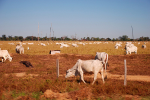
Feeding a growing world population in 2050 without the need to clear forests is possible, also with organic farming, if we cut down on meat, new research shows. Scientists at the Alpen-Adra University in Vienna looked at 500 different scenarios taking into account a variety of key factors such as future yields, land-use intensity, various livestock systems, the area needed for farming and grazing, as well as human diets (vegan, vegetarian, modest consumption of meat, current consumption patterns). Human diets are the key factor, the research team reported on April 19 in the journal Nature Communications. “If the world’s population followed a vegan diet, all combinations of parameters, even those with lowest yield levels and low cropland expansion, would be feasible”, explained Karlheinz Erb, the lead author of the study. “With a vegetarian diet, 94 per cent of all of our calculated scenarios would be feasible.” The results of the study show that producing enough food for almost 10 billion people by 2050 without deforestation becomes increasingly difficult the more meat is consumed. Because of the amount of land it takes to raise animals for meat, only 15% of the scenarios with typical meat-heavy Western diets were feasible – and only with intensive levels of agricultural management as well as massive expansion of cropland into areas now used for grazing. Whereas the vegan diet require less cropland than in the year 2000, meat-based diets would lead to a cropland demand of up to 23.5 million square kilometres, 52 per cent above the current levels. Going vegetarian would allow for an area around the size of India to return to nature. The scientists stress that it is not even necessary to give up meat completely to preserve forests since almost two thirds of the scenarios would still be feasible if meat consumption was reduced to levels in line with public recommendations for a healthy diet. Livestock farming can also produce positive effects, they argue, For instance, livestock can use areas that are not suitable for any other agricultural use except extensive grassland management and increase food availability. However, this benefit is lost if animals are fed with concentrated feedstuff based on cereals grown on arable land. According to the study, feeding 10 billion people in a zero-deforestation world is also possible with lower-yielding agriculture such as organic farming if paired with a vegetarian or vegan diet. While they assumed lower yields for organic farming in industrialized systems compared to business-as-usual trajectories they wrote that regions with little industrialized agriculture would not be affected by yield reductions. Another important factor is the reduction of food waste. The reseachers concluded that if current trends of meat consumption continue, feeding the world in 2050 without clearing forests and converting grasslands into arable land will not be possible. However, their findings illustrate that the United Nations Sustainable Development Goals (SDGs) of protecting forests and the climate are compatible with the aim of achieving food security for a growing population if we reduce meat consumption and tackle food waste. (ab)
19.04.2016
Area planted with genetically modified crops declines in 2015

The global area planted with genetically modified crops has decreased for the first time since the commercial introduction of GM crops in 1996. The worldwide acreage reached 179.7 million hectares in 2015, down by one per cent from 181.5 million hectares in 2014. These figures were published on April 13 by the GMO-friendly organisation “International Service for the Acquisition of Agri-Biotech Applications (ISAAA)”. According to their annual report, the main reason for the drop was a reduction in total plantings of maize and cotton, two of the main GM crops, driven by low commodity prices. The organisation argues that this caused farmers to switch to other less demanding crops like pulses, sunflower and sorghum. The report highlights that the global hectarage of GM crops has increased 100-fold over the past 20 years. But a comparison of the organisation’s annual reports shows that year-to-year growth has slowed down recently. Following years of double-digit growth, in 2012, the global hectareage of GM crops only increased by 6 per cent compared to the previous year. In 2014, it only increased by 3.6 per cent. The cultivation of genetically modified crops is still concentrated in just a few countries. The US is the leading producer with 70.9 million hectares or 39 per cent of the global area. Brazil ranks second with 44.2 million hectares, followed by Argentina with 24.5 million hectares. India ranked fourth with 11.6 million hectares and Canada was fifth at 11.0 million hectares. Other GM producing countries include China, Paraguay, Pakistan, South Africa and Uruguay. Genetic modification is still largely restricted to four main crops: Soybeans are grown on half of the area planted with GM crops, followed by maize, cotton and rapeseed. Insect resistance and herbicide tolerance are the only two traits that have been developed and cultivated on a large scale. 53 per cent of GM crops grown in 2015 were herbicide tolerant, 14 per cent were insect resistant and 33 per cent had a combination of both traits. The report states that genetically modified crops were grown in 2015 by up to 18 million farmers, 90 per cent of which were resource-poor small-scale farmers in developing countries. This has helped alleviate hunger and poverty for up to 16.5 million small farmers and their families annually totaling about 65 million people – at least according to ISAAA, which is sponsored by agrochemical giant Monsanto and CropLife International, the association of agricultural biotechnology companies. According to the FAO, the global agricultural area amounts to 4.9 billion hectares and arable land to 1.4 billion hectares. This means that the 179.9 million hectares planted with GM crops in 2015, as stated by the ISAAA, only make up roughly 3.6% of the total agricultural area and 13% of arable land. (ab)
